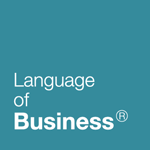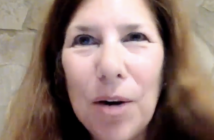TV Extra: How much time should non-profits raise funds?
The mission of Courageous Parents Network (CPN) is to support parents and families of children living with serious illness, providing them with the skills, tools and virtual support they need. Blyth Lord is the Executive Director. In this TV Extra, Blyth Lord talks about the amount of time she is spending fund raising, and why that is especially mission-critical at this point in the CPN development.
Here are some great resources to consider:
10 Online Fundraising Best Practices for Nonprofits: In 2013 online giving grew 13.5% according to the Blackbaud Index of Online Giving and 14% according to the Network for Good’s Online Giving Index with small and medium-sized nonprofits are experiencing the largest growth.
Nonprofit Fundraising Methods: An Overview: Raising money for a charitable or nonprofit organization is always a challenge, whether in good times or bad. But you can make it easier for your nonprofit if you learn about all the different methods of fundraising, and choose those that are truly best suited to your organization.
Online Fundraising Ideas for Nonprofits: Create an online fundraising program or revise your current fundraising strategy with our how-to articles, tools, and tips. Jump-start your online fundraising with new ideas to get more donors, raise more money, and reach your goals.
5 Fundraising Predictions for 2015: Conversion optimization, or improving donation flow to raise more money; the ability to engage with Millennials; donor retention and treating all donors as if they are major donors; online fundraising and mobile; and, the ability to share stories in a very visual way will be the top fundraising trends for 2015.
About Courageous Parents Network:
The mission and goals of Courageous Parents Network originate in my experience parenting my daughter Cameron following her diagnosis of Tay-Sachs at the age of six-months. Tay-Sachs is a rare and incurable genetic illness that always ends in early childhood death. Both parents must be carriers of the gene. My nephew Hayden— Cameron’s first cousin (photo below)—was also diagnosed with Tay-Sachs disease, one month before Cameron’s diagnosis, when he was 18 months old. Hayden and Cameron’s fathers are identical twins who both married carriers—women who were, also, best friends in college. The twins’ genetic mutation had never been seen before, and the likelihood of these two brothers marrying carriers and having affected children was 1 in 80,000,000. What happened in our family was a statistical near-impossibility—two brothers, two wives, and two babies affected with a rare disease that would die before the age of 3. But, in its way, it made everything that followed possible.
My husband Charlie and I and our brother and sister-in-law, Tim and Alison, were traveling together on the road towards our respective children’s deaths; but we were also traveling the distance together to figure out how to cope. Our children would be beloved. We would give them the best lives possible and then prepare to give them the best deaths possible. And we would pray that we survived.
We did more than survive. Despite the profound sadness of watching our beautiful daughter lose all cognitive and physical abilities, Charlie and I were able to live fully into her short life. Despite the fear we had of losing her, we were prepared to accept, face and allow her pending death. And despite the Whoosh that poured from our life and our home when we watched her die, we were able to heal and, in time, emerge from the dark fog of grief that surrounded our family.



